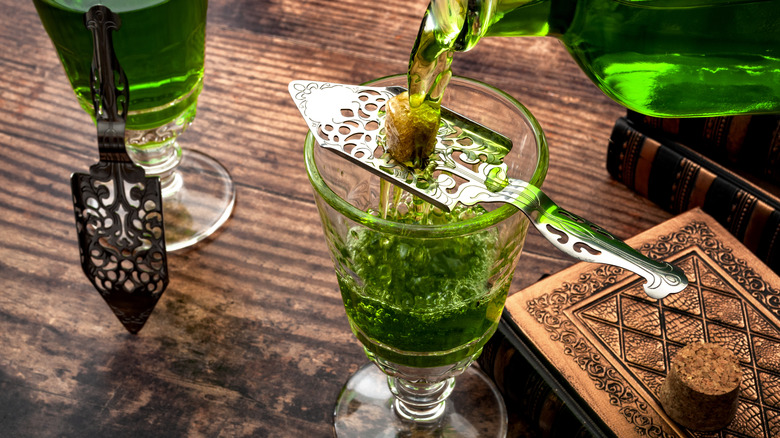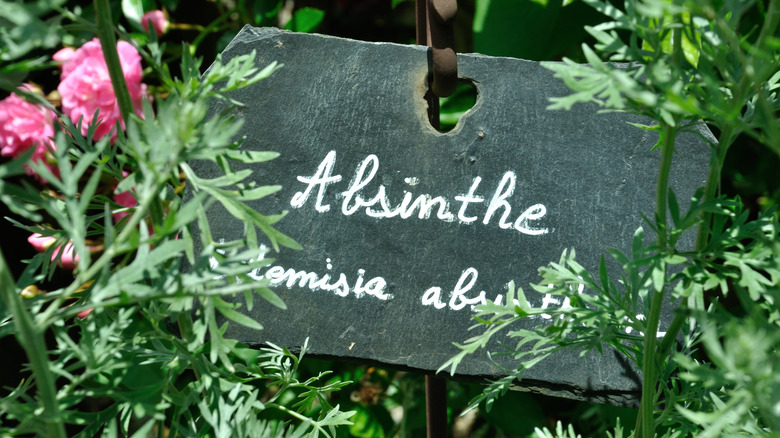The Bizarre Absinthe Myth You Have To Stop Believing
Want to drink like the poets and artists of old did? Try absinthe, the verdant liqueur that tastes like black licorice and derives much of its flavor from a plant called wormwood, a.k.a, Artemisia absinthium (which is from whence the drink gets its name). Absinthe has a reputation for causing hallucinations, and its nickname, The Green Fairy, has historically given people the idea that one who imbibes this green liquor will actually see such a thing, among other mind-bending sights.
The truth is that absinthe, while certainly one of the stronger liquors out there (one version is 179 proof, which means it's almost 90% alcohol), does not cause the hallucination, erratic behaviors, and even murders for which it has become legendary. Despite its alcohol content, which is typically made up to 150 proof in the U.S., absinthe contains relatively little of the substance thujone, which supposedly makes the green drink hallucinogenic.
In fact, in order to ingest enough thujone for it to make anything of that sort appear, you would likely reach a state of unconsciousness before you could attain a state of hallucination. If you're looking for an alcoholic beverage that could produce hallucinations, there's Medieval henbane-laced beer – although it might be hard to get your hands on it in this day and age.
So why is absinthe associated with strange visions and weird behavior?
If it wasn't the absinthe making creatives more imaginative or turning men into violent beasts, then what was it? For starters, let's clear up the assumption that the absinthe of old was stronger than what is produced today; by studying the old recipes, it was deduced that historical absinthe clocked in around 140 proof, not so different from what is sold now (though what is sold now, even in a mixed drink, rings alarm bells for bartenders). While not stronger, it was absolutely still a stiff drink, and if people were sitting around drinking it all day or in regular binges, they likely developed alcoholism, which can cause violence and, although rare, hallucinations.
As for creatives who claimed it helped to open their minds, that was likely just the beginning of being intoxicated — don't we all feel a little more courageous and less inhibited when we're buzzed? There is also the fact that apparently some of the bohemians of the 19th and early 20th century also combined drinking absinthe with opium use — a raucous experience for the mind, we're sure. We'll stick with a Sazerac cocktail, hold the opium, thanks.

